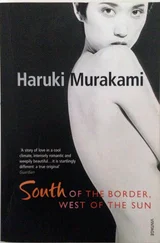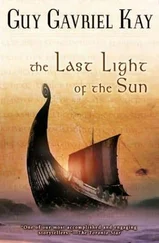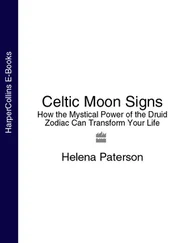If you come up with additional observations and insights about any of the types, we would be happy to hear from you. All material used will be acknowledged in future editions of this book and/or our further publications.
OTHER ASTROLOGICAL FACTORS
The sign position of your Sun and Moon are of great importance in understanding your central psychology. When it comes to refining your understanding of your Sun and Moon, your Ascendant sign and the position of your Sun and Moon in the 12 ‘houses’ of the chart are also very significant. Interpretation of these is outside the scope of this book. The Ascendant and the houses are determined by the time of birth. Each house focuses on a different area of life and has qualities not unlike the signs. Regardless of your Sun sign, if you were born at sunrise, with Sun in the first house, you will have some of the self-centred qualities of Aries. On the other hand, if you were born in the hour or so after sunset, your Sun will have some of the Virgo qualities of the desire to be of service and to develop special skills.
The other important factors that will modify the basic interpretations given in these pages are the aspects made to the Sun and Moon by the planets. If you have your Sun or Moon in close aspect to Saturn, it adds a Capricorn overtone. Likewise, if one of the lights aspects Jupiter it will add jovial qualities, and so on.
For your further exploration of these and other factors, a short list of recommended astrology books is given on page 567. Of these, Grant Lewi’s Heaven Knows What contains the classic pioneering texts on Sun – Moon combinations, whilst Liz Greene and Howard Sasportas’ The Luminaries is an invaluable study of the deeper psychologies of the Sun and Moon, and is especially recommended for those who want to obtain an in-depth understanding of these life principles.
Chapter Two SUN AND MOON: THE LIGHTS OF OUR LIFE
As different as night and day.
The greater your understanding of what the Sun and Moon represent within you, the more valuable and interesting you will find the Sun – Moon profiles given in this book. This chapter looks in more detail at the significance of each of these ‘lights’ or luminaries, as astrologers call them.
We all have different sides to our personality. These different aspects of ourselves are not always in agreement with one another. The two most central and important parts of our nature are represented astrologically by the Sun and the Moon. We can think of these as rather like our masculine and feminine approaches to life that we learned from our father and mother (or those who acted as our parents). For to an astrologer, regardless of our sex, we all have both male and female dimensions to our nature. The central purpose of this book is to show something of the main issues involved with each of the different types of Sun and Moon zodiacal combinations. Equally, it is to show what can happen when we really become aware of these two sides and begin to work – and live – more wholeheartedly with them.
When we talk about the Sun we are essentially referring to our conscious, focused, ‘thinking’ level which we use to make decisions and move about purposefully in the world. By contrast, when we talk about the Moon we refer to our spontaneous, natural, receptive, ‘feeling’ level, and the way we seek and give nourishment and comfort to ourselves and to others. So far so good. But what, we may ask, have the Sun and Moon out there got to do with what is going on within us down here ?
The ancient wisdom, of which astrology is an important part, had no problem with this question. The ancients saw no real separation between man and the cosmos. Their central dictum was ‘As Above, So Below’. In other words, they saw that all things are the product and reflection of the same Creator, that ‘all things are made in the image of the One’. This idea may at first sound very strange to modern ears, but, as those who have seen the film Jurassic Park will know, this idea is still central to contemporary scientific thought. For we now know that the instructions for making the whole body are given in the DNA of every body cell.
Just as one cell can tell us about the whole body, so likewise the ancients argued that what we see Above, in the heavens, will be reflected down here, Below, on Earth. Or, put another way, what we see in the macrocosm, the larger whole, will be reflected in the microcosm, the smaller whole. Science is increasingly corroborating this premise through discoveries about the ‘inter-connectedness of all life’, which has given rise to the now universally accepted idea that the ecological balance in nature, when disturbed by man’s greedy interferences, threatens our survival.
The Sun and Moon are certainly the most prominent features of the heavens; they illuminate our distinctive but complementary worlds of day and night. This being the case, we can argue that all things will contain an equivalent Sun and Moon within them. So this means that the ideas of the Sun and Moon are to be found at work within all organisms. And, just as the DNA we see under a microscope looks nothing like the cells, tissues and organs that it can become, so the Sun and Moon take on different forms in different entities. In other words, no-one would mistake a chicken for an egg, or an acorn for an oak. They look totally different. Yet we know in fact that chicken and egg, acorn and oak are rather intimately related to each other.
Astrology is a larger expression of this same chicken and egg metaphor. The ancients saw that if Above and Below are reflections of each other, then all things must contain the same essential ingredients. (But as to the perennial question – what came first, the chicken or the egg? – that discusson belongs in another book!)
To the ancients the Sun and Moon were the gods who illuminated and ruled over the starkly contrasting worlds of day and night. So by analogy the same gods are seen to dwell within us, illuminating our own days and nights, our own minds and hearts. The Sun, which lights our days, represents the state within us of being wide awake. This ‘noonday’ level of consciousness enables us to be deliberately conscious, focused and attentive. In this state we know ourselves as separate, alert individuals, attempting to make our way heroically in the world, even though we may wonder why we sometimes bungle it so badly. Nevertheless, we consciously keep trying.
In terms of recent research on the brain, the Sun relates to that level of consciousness which is traditionally associated with a masculine approach to life: the left brain’s activities of reasoning, manipulating objects and numbers; the ability to think in three dimensions, to orient oneself, to plan, organize and pursue specific goals.
The Moon, by contrast, represents the feminine level of our personality. The ancients knew that the Moon ruled the world of night and the mystery of the unconscious, of dreams, imagination and the ebb and flow of our emotional needs, responses and sympathies. At this level we are in the realm of the feminine and all matters related to the right hemisphere of the brain, such as sensitivity to sights, sounds, smells; verbal fluency; and interest in people and relationships. The Moon is our connection with the larger world of what some would call Soul, that principle by which we are connected through body and feeling to all life. The Moon is our ability to respond to our own needs and to the needs of others for nourishment, protection and affection.
To put it on a postcard, we could say that the Sun shows our more individual side and what we are like when we make wide-awake, conscious decisions about our life, what interests us and where we are going. Whereas the Moon shows our natural, gut-level, instinctive response to life, our emotional needs and our approach to looking after ourselves and the needs of others. And the vital thing to remember is that, whether we are male or female, we each have both Sun and Moon sides to our nature. To clarify further what these two different sides actually mean for us in real life, let us look at some real-life situations.
Читать дальше












